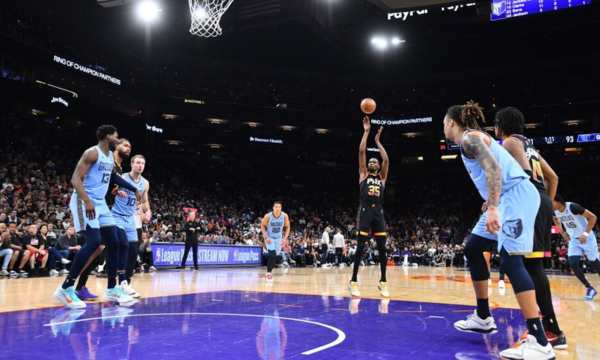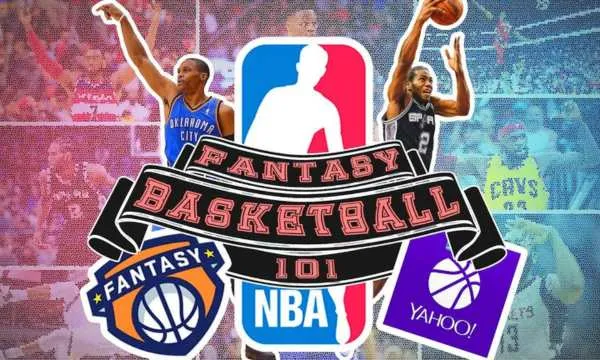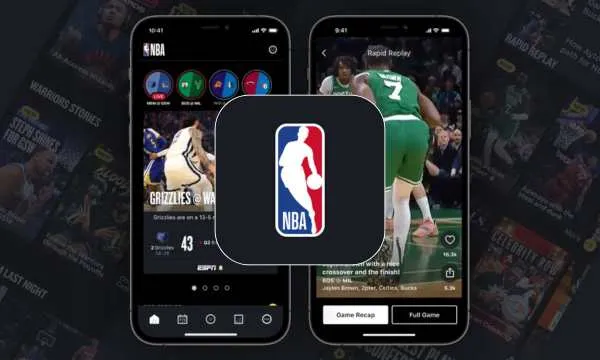Basketball Rules: Understand the Game Like a Professional
Basketball rules are fascinating and transform a simple ball game into a complete strategic experience.
Ad
Have you ever wondered why some plays are annulled while others are perfectly legal?
Understanding basketball rules not only enhances your experience as a spectator but also elevates your own game if you play the sport.
In this article, we will delve into every aspect of the official rules, from court dimensions to referee signals.
Get ready to know basketball like never before and impress your friends with your technical knowledge!
Court Dimensions
Basketball rules establish specific dimensions that vary slightly between different leagues.
In FIBA (International Basketball Federation), the official court measures 28 meters in length by 15 meters in width. In the NBA, the dimensions are slightly different: 28.65m x 15.24m.
The three-point line also presents important variations in the official rules. In FIBA, it is positioned 6.75 meters from the center of the basket, while in the NBA, the distance is 7.24 meters.
The key, a fundamental area in basketball rules, has a rectangular shape in FIBA competitions, measuring 5.8 meters in width. In the NBA, it has a trapezoidal shape, being wider near the baseline.
The height of the basket is universal: exactly 3.05 meters from the ground. The free-throw line is positioned 4.6 meters from the baseline, or 5.8 meters from the center of the basket.
These precise measurements ensure the standardization of the game globally, allowing fair competitions in any country.
Basketball Rules for Game Time and Ball Possession
In FIBA, a game has four periods of 10 minutes each, totaling 40 minutes of play. In the NBA, each quarter lasts 12 minutes, resulting in a total of 48 minutes of play.
Ball possession control is governed by specific timers in different leagues. The 24-second clock is fundamental, forcing the attacking team to shoot within that period.
Basketball rules also determine the time to advance the ball to the frontcourt. In FIBA and the NBA, the team has 8 seconds to cross the midcourt line.
The intervals between quarters last 2 minutes in the official basketball rules, while the halftime break lasts 15 minutes.
In case of a tie, the rules provide for 5-minute overtimes until there is a winner. The alternating possession is another important element, being decided at the beginning of the game and alternated in specific situations.

Ball-possession-(Source-Google)
Understanding the Controversy of “Travelling”
“Travelling” is one of the most common and controversial violations in basketball rules. It occurs when a player holding the ball moves their pivot foot before dribbling.
In modern rules, a player can take two steps after stopping dribbling before shooting or passing. This movement, known as a “gather step,” is allowed by current rules but often causes confusion.
Many fans question why certain movements are not called as travelling, especially in the NBA. FIBA rules tend to be stricter in this aspect.
The “euro step,” popularized by European players, is a legal move within the sport’s norms that allows for two steps in different directions.
The pivot is another important concept in rules related to travelling. A player can pivot with one fixed foot (pivot foot) without committing a violation. The interpretation of basketball rules on travelling varies between referees and leagues, contributing to the controversies.
The 3-Second Rule in the Paint
This rule prohibits offensive players from staying in the paint for more than three consecutive seconds. Basketball rules implemented this restriction to prevent tall players from camping under the basket.
In defense, some leagues have also adopted the defensive 3-second rule, part of the NBA rules. Referees signal the violation by raising three fingers and then pointing to the bench.
When a 3-second violation occurs, the opposing team gains possession of the ball. The 3-second count is interrupted when the ball is in the air on a shot.
The rules allow a player in the paint to stay for more than 3 seconds and receive the ball and make an immediate move.
This rule makes the game more dynamic and prevents congestion in the restricted area. In youth basketball rules and amateur competitions, this rule may have more flexible application.
Different Types of Fouls
Basketball rules classify fouls into various categories, each with its own penalties.
The personal foul is the most common, occurring when there is irregular physical contact between players. The rules allow five personal fouls per player in FIBA and six in the NBA before disqualification.
The technical foul is called for unsportsmanlike behavior without physical contact. Flagrant or unsportsmanlike fouls are considered more serious and can result in immediate exclusion.
Basketball rules establish the bonus when a team commits a certain number of team fouls in the period. In the bonus, any foul results in free throws for the opponent, even if not in the act of shooting.
The rules also recognize the offensive foul, when an attacker commits an infraction against a positioned defender. In modern rules, “flopping” (simulation) can be penalized with a technical foul in some leagues.
Basketball Rules for Free Throws
Free throws are undefended shots awarded after certain fouls. A free throw is worth 1 point in the official basketball rules.
The player has 10 seconds to execute the free throw in both FIBA and NBA rules.
The official league rules determine specific positions for players during free throws.
Only three defenders and two attackers can position themselves in the designated spaces around the paint. It is also prohibited for players to enter the paint before the ball touches the rim on the free throw.
The number of free throws varies in basketball rules depending on the context of the foul. Three-point shots with a foul grant three free throws in the official rules.
Substitutions are allowed during free throws only in specific situations. In youth competitions, the rules may modify the free-throw line distance to suit the participants’ age.

Free-throws-(Source-Google)
Jump Ball, Inbound, and Time-Out: Whose Possession Is It?
A jump ball occurs when two opponents firmly hold the ball simultaneously. In current basketball rules, alternating possession has replaced the traditional “jump ball” to resolve held ball situations.
The rules determine that the alternating possession arrow indicates which team receives the ball after it is in the simultaneous possession of two players.
Sideline inbounds follow specific procedures to ensure the continuity of the game. The player inbounding has 5 seconds to pass the ball, according to the official basketball rules.
Defenders are prohibited from crossing the boundary line during the inbound. Violations during the inbound result in loss of possession. Basketball rules establish protocols for inbounds in the last two minutes of the game.
A time-out occurs when the ball goes out of bounds, and basketball rules determine that the last touch defines possession. In doubtful cases, modern basketball rules allow video review to determine the correct possession.
How Time-Out Requests and Substitutions Work
In FIBA, two time-outs are granted in the first half and three in the second. In the NBA, the rules allow seven time-outs per game, with limitations in the final minutes.
Basketball rules determine that each time-out lasts 1 minute in FIBA and 75 seconds in the NBA. Player substitutions follow specific procedures in the official basketball rules.
Unlimited substitutions are allowed, but only during official game stoppages. To request a substitution, the player must go to the scorer’s table according to the official sport rules.
In case of injury, basketball rules allow immediate substitution, stopping the game if necessary.
Players who have been substituted can return to the game later. The rules establish that the substituted player must leave the court before the substitute enters.
Understand the Essential Hand Signals of Refereeing
Hand signals are visual tools used by referees to communicate decisions based on basketball rules. Knowing these signals helps to better understand the game and the application of rules in real-time.
Scoring is indicated with raised fingers, as established in the official basketball rules. For violations like “travelling” or “double dribble,” the rules prescribe specific gestures that referees must use.
The signal for a personal foul involves a closed fist and indicating the player’s number. The basketball regulations determine that technical fouls are signaled by forming a “T” with the hands.
For unsportsmanlike fouls, the rules establish that the referee holds the wrist above the head, and the three seconds are signaled with three extended fingers.
Communication between referees also follows visual protocols determined by basketball rules. These signals ensure that everyone understands the decisions, regardless of the spoken language.
Conclusion
Mastering basketball rules opens up a new world of appreciation for this fascinating sport. By understanding every aspect, from court dimensions to refereeing signals, you transform from a mere spectator into a true connoisseur of the game.
The different interpretations of basketball regulations between leagues like FIBA and the NBA show how the sport adapts to different cultures and styles.
Regardless of your level of involvement, understanding the nuances of these rules allows you to appreciate the strategies and skills on display during each game.
So, the next time you watch a game, observe how the rules shape the flow and dynamics of this sport that has conquered the world!
FAQ
Why is the three-point line different in the NBA and FIBA?
How do I know when a team is in the “bonus”?
What is the difference between a technical foul and an unsportsmanlike foul?
What happens if a player commits their sixth foul in the NBA but there are no substitutes available?
Is it allowed to touch the rim during a shot?
 Watch Live Basketball: Best Streaming Apps
Watch Live Basketball: Best Streaming Apps
Remember when catching a game meant rearranging your entire evening around cable schedules? Live basketball streaming changed that forever. Ad Today, you can watch live basketball […]
Keep reading NBA Fantasy: Best Apps to Build and Manage Your Champion Team
NBA Fantasy: Best Apps to Build and Manage Your Champion Team
NBA fantasy turns real games into a strategic, data-driven adventure where you manage a roster, make smart moves, and enjoy friendly competition. Ad In this article, […]
Keep reading NBA App: Watch Live Games & Highlights
NBA App: Watch Live Games & Highlights
The NBA App has evolved into a powerful hub for fans seeking live action, quick highlights, and original stories that bring the league closer than ever. […]
Keep reading